Navigating the headlines around student loan forgiveness can be confusing, especially when there are seemingly contradictory reports. The headlines you’re seeing reflect different aspects of the ongoing debate over student loan forgiveness and related policies. At My Education Solutions, we want to help people focus on what is working, regardless of the distracting headlines that are preventing borrowers from actually getting the help they need and deserve.
For starters, Student Loan Forgiveness is being approved for those following the 2007 Student Loan Act guidelines, not the plans implemented by the Biden administration. The Student Loan Act of 2007 was created and passed under the Bush administration and implemented under the Obama administration.
Unlike the Biden administration student loan policies that the media is promoting that are blocked because they were not approved by Congress, the 2007 Student Loan Act was approved by Congress and has been consistently delivering student loan forgiveness for millions without the whiplash of politically motivated headlines.
Christina Randell, President of My Education Solutions, a Student Loan Management Firm, has helped their Clients save 98% off on average of their federal student loans using the tried and true student loan programs that have been in place for years and not getting caught up in the media and political agendas of either party.

Are Federal Student Loan Payments On Hold and Not Accruing Interest?
Actually, Federal Student Loan Payments have been accruing interest since September 1st of 2023 and people began repaying the following month. October 1st, 2024 marked the return of payments for everyone and interest is accruing for many people even with the Judges’ order that is freezing loans on some individuals it does not apply to everyone. It would be wise to reach out to your assigned Servicer immediately and open your account to see if you need to begin making payments immediately and check each month as information is continually being updated at your Servicer and your credit report. Non-payment of your student loans can result in a negative impact on your credit score and garnishment.
Background on Student Loan Forgiveness Plans
Over the past few years, the Biden administration has been advocating for significant changes to student loan policies, including widespread loan forgiveness. Biden initially proposed forgiving up to $10,000 per borrower, and more for those with Pell Grants. However, this proposal faced legal challenges and was ultimately struck down by the Supreme Court in June 2023. Since then, the administration has been exploring alternative paths to provide relief.
Legal Challenges and Supreme Court Ruling
The Supreme Court’s decision essentially halted the original plan, ruling that the President doesn’t have the authority to cancel such a significant amount of debt without congressional approval. This ruling underscored a key issue: the division between executive and legislative powers in handling federal financial policies. As a result, the Biden administration had to go back to the drawing board, exploring other methods within legal boundaries to achieve loan forgiveness.
New Efforts and Incremental Relief
In response to the ruling, the Biden administration introduced a new plan under the Higher Education Act of 1965, which grants the Department of Education the authority to make changes to federal student aid programs. This new plan, often termed the “SAVE” (Saving on a Valuable Education) Plan, aims to offer relief to borrowers through income-driven repayment plans, which cap monthly payments based on income and forgive remaining balances after a certain period.
Additionally, the Department of Education has been canceling loans for targeted groups, like those affected by school closures or fraudulent practices. These targeted efforts have resulted in billions of dollars in relief for specific borrowers, even though they don’t represent the widespread forgiveness that many hoped for.
Why the Mixed Messages?
- Scope and Scale: Some publications focus on the ongoing, smaller-scale cancellations, such as the relief for borrowers defrauded by their schools. These stories highlight loan forgiveness as “moving forward,” which is technically accurate, but on a much narrower scope than the original plan.
- Alternative Paths: While the large-scale forgiveness plan was blocked, the administration is pursuing other means to provide relief, like the SAVE Plan. Some reports may interpret this as a step forward, while others see it as a compromise.
- Political and Legal Challenges: Differing philosophies as to whether Student Loan Forgiveness is an entitlement of all Americans regardless of financial means versus providing a safety net to protect those that would not be able to financially pay off the debt as it was originally designed in the 2007 Student Loan Act.
- There is also ongoing opposition from certain lawmakers and organizations that could lead to further legal battles. The student loan money available to be loaned to those in financial need is the taxpayers money and according to the Constitution it is only Congress that can approve how the taxpayers money can be spent and forgiven to protect the “people’s money”.
These obstacles make it difficult to predict which aspects of forgiveness plans will succeed.
What Borrowers Need to Know Now
While there is no definitive large-scale forgiveness plan like the one Biden initially proposed, relief options are still available:
- SAVE Plan: Borrowers should explore income-driven repayment plans, as these may significantly reduce monthly payments.
- Targeted Forgiveness: If you’ve been affected by issues like school closures or fraudulent practices, you may qualify for relief.
- Stay Informed: The Department of Education continues to provide updates on relief efforts. Following official announcements is the best way to stay informed amid the shifting news landscape.
The bottom line is that, while widespread loan cancellation may not be happening as originally envisioned, other forms of relief are being implemented and more could come in the future. Borrowers should stay connected with the Department of Education and consult with their loan servicers to explore available options.
To get assistance and clarity on your student loans, visit www.MyEducationSolutions.com or call 210-812-3200 to speak with a Student Loan Advisor.




